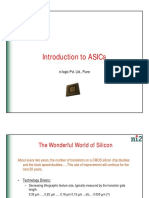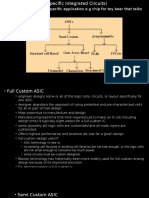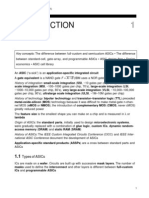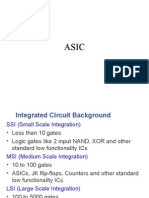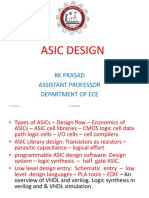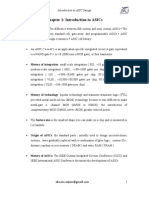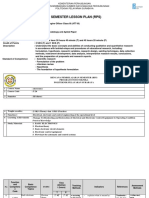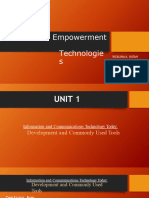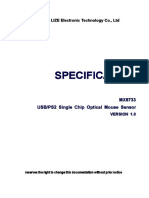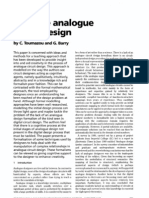0% found this document useful (0 votes)
83 views50 pagesUnit 1
There are three main types of ASICs:
1. Full custom ASICs where all logic cells and layout are customized for a specific application.
2. Semi-custom ASICs which use pre-characterized logic cells and customize most mask layers.
3. Programmable ASICs like gate arrays which use prefabricated logic cells (macros) and only customize the interconnects. Gate arrays come in channeled and channel-less varieties.
Uploaded by
mohitCopyright
© © All Rights Reserved
We take content rights seriously. If you suspect this is your content, claim it here.
Available Formats
Download as PDF, TXT or read online on Scribd
0% found this document useful (0 votes)
83 views50 pagesUnit 1
There are three main types of ASICs:
1. Full custom ASICs where all logic cells and layout are customized for a specific application.
2. Semi-custom ASICs which use pre-characterized logic cells and customize most mask layers.
3. Programmable ASICs like gate arrays which use prefabricated logic cells (macros) and only customize the interconnects. Gate arrays come in channeled and channel-less varieties.
Uploaded by
mohitCopyright
© © All Rights Reserved
We take content rights seriously. If you suspect this is your content, claim it here.
Available Formats
Download as PDF, TXT or read online on Scribd
/ 50





